Brian Meert's Blog, page 84
April 26, 2019
Reddit Advertising for Beginners: Ad Cost, Objectives, Targeting, and Creation

By Anna Hubbel | APR 26, 2019
 Con Karampelas / Unsplash
Con Karampelas / UnsplashWhen we think of social media advertising, the networks that typically come to mind include the conglomerate of Facebook, Instagram, Snapchat, and Pinterest. Although not many think of Reddit, it is now emerging as an auspicious advertising platform.
Reddit is an online forum that is constantly updated with breaking news, interesting stories, memes, pictures, and videos from across the internet. The platform has more than 330 million monthly visitors, 130,000 active communities, and 21 billion monthly views. Users spend an average of 36 minutes in the Reddit app daily. Its primary audience demographics include gamers, TV and film fans, fashion enthusiasts, consumer tech aficionados, health buffs, and sports savants.
While Reddit is already popular across a variety of demographics, its advertising potential is still growing. According to an Emarketer report, Reddit’s net US ad revenues will reach $119 million this year. That number is expected to more than double to $261.7 million by 2021. For advertisers looking to expand their horizons, Reddit certainly offers a great deal of promise.
“Reddit’s users are tech-savvy and highly engaged, making them attractive to advertisers,” said Emarketer forecasting director Monica Peart in the aforementioned Emarketer report. “A large portion are unique users, meaning they don’t use other social platforms. That means advertisers have the potential to reach new audiences in a highly targeted way.”
But before an advertiser jumps blindly into Reddit advertising, it’s important to know the basics of advertising on this unique platform first. This article will cover Reddit’s ad objectives and ad targeting, followed by step-by-step instructions for creating a Reddit ad campaign.
Reddit’s Ad Objectives
Reddit offers five ad objectives:
Brand awareness and reachTraffic Conversions App Install Video Views
The brand awareness and reach objective is ideal for advertisers who want to build interest in their brand and reach their audience. The traffic objective is best for driving traffic to a desired landing page. The conversions objective focuses on driving conversions, app install on driving mobile app installs, and video views on generating video views.
Each objective also has a particular post type. For brand awareness and reach, post types include text, link (can include an image), and video. For traffic, conversions, and app installs, post types include link and video. For video views, the only post type is video.
When creating a Reddit campaign, advertisers should know precisely what their goals are so they can choose the right objective and drive results.
Reddit’s Ad Targeting

Reddit also offers five different ad targeting categories:
LocationsInterestsCommunityDeviceTime of day
Targeting by location allows advertisers to reach an audience in a specific location: country, US state, or from Reddit’s list of 210 US cities. Advertisers may choose this option if their products are popular in a particular location. For example, if advertisers want to promote their ridesharing apps, they could choose to target audiences in cities where ridesharing is popular, such as Los Angeles, Chicago, New York City, Houston, and Philadelphia. Location targeting allows advertisers to deliver more relevant ads to users.
Reddit’s ad server is set to no location targeting by default. If untouched, that means an ad will be delivered worldwide, using only any other selected targeting parameters to designate a particular audience.
Interest targeting uses the browsing behaviors of users to target specific groups and subgroups. It allows advertisers to define either a wide audience or a more granular one. For example, an advertiser promoting a sports gaming app would select the gaming interest group and the video gaming and eSports subgroups. Reddit looks at how users engage with different kinds of content to determine which interest groups to classify them as.
Advertisers who want to reach groups of like-minded individuals can use community targeting. Community targeting delivers ads to users based on topics they engage with in the form of subreddits. Reddit targets subscribers and visitors of a subreddit or community, displaying ads to these users either while they are visiting the targeted subreddit or even while they’re exploring other subreddits.
Targeting by device is the ideal option for advertisers who want to reach an audience that uses a specific device. Advertisers can target audiences that use desktop or mobile, as well as Android or iOS. For example, advertisers want to promote an iOS-only app, they would select mobile as the device type and iOS as the specific type of mobile device.
Finally, advertisers can also target by time of day. Some audiences are more receptive to ads during specific days and times. For example, a user that engages with news content may be more active on Reddit during work hours than later in the evening. Advertisers can specify the day of the week and the hours they want their ad to run. It’s worth noting that targeting by time of day reduces the total number of possible impressions.
Reddit’s Cost
 Sharon McCutcheon / Unsplash
Sharon McCutcheon / Unsplash Much like most social media advertising platforms, like Facebook and Pinterest, advertising on Reddit is a bid. You set your budget for the duration of time you want your ad to run and select a bidding type. Do you want to spend $1,000 a day on your ad campaigns? You can do that. Do you want to spend only $500 a day on your ads? You can do that too.
However, because Reddit advertising is a bid, you don’t want to bid too low for the spot where you want your ads to appear, lest competitors outbid you. Like in any auction, you want to outbid other people for the spot you want.
Reddit has five bidding types available. All of these bidding types are paired with the appropriate objectives. For example, if you use traffic as your objective, the bidding type available to you is cost per click, or CPC. These are Reddit’s bidding options:
CPM or cost per 1,000 impressions (brand awareness and reach objective)CPC or cost per click (traffic objective, app install objective, and conversions objective)CCPV or Cost per video views (video views objective)
How to Create a Reddit Ad Campaign
You need the following to create a Reddit ad campaign:
A Reddit username and account with a verified email addressAd assets, such as ad copy, card and thumbnail image, video in MP4 or MOV format (for video ads), destination links, and click trackers (for app install ads)Valid credit or debit card
Step 1: Sign into the Reddit ads dashboard. On the “Create Campaign” page, name your campaign.

Step 2: Select a campaign objective.

Step 3: Proceed to follow the prompts for building your ad group, defining your target audience, and setting your ad’s schedule and budget.
There are two types of budgets to choose from for your campaign:
Daily budget: an amount you want to spend on your campaign per day. This is an average amount, as sometimes a bit more or a bit less will be delivered.Lifetime budget: an amount you want to spend over a given date range. The ad attempts to deliver your average daily spend each day until you hit your total budget.
Advertisers are spending more on Reddit for a good reason. Although the platform is known for provoking controversial content at times, it is a valued space both subscribers and visitors engage with on a regular basis. It may not be a leader of the social media pack like Facebook or Instagram, but it is certainly a name that’s attracting more attention.
Written by
Anna Hubbel
, writer at AdvertiseMint
The post Reddit Advertising for Beginners: Ad Cost, Objectives, Targeting, and Creation appeared first on AdvertiseMint.
April 24, 2019
Facebook Q1 2019 Earnings Report: Company Now Has 2.38B Monthly Active Users

By Anne Felicitas, writer & editor| APR 24, 2019
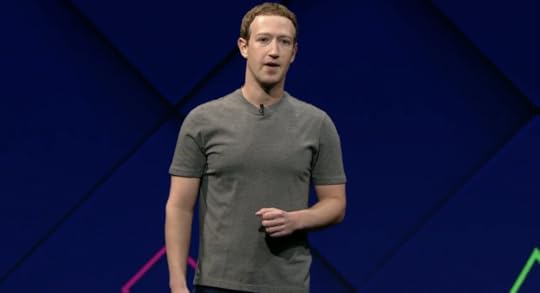 Mark Zuckerberg at Facebook F8
Mark Zuckerberg at Facebook F8Facebook shared its first quarter 2019 earnings report today, announcing an increase in monthly active users and its plans for data security within the next few years.
As of March 31, 2019, Facebook has 2.38 billion monthly active users, an increase of eight percent year-over-year. Its daily active users as for March 2019 is 1.56 billion.
Now more than 2.1 billion people use Facebook, Instagram, WhatsApp, or Messenger every day on average. Around 2.7 billion people use at least one of Facebook’s family of apps each month.
According to CEO Mark Zuckerberg, the company will focus on data security. The company will explore ways to give its users a private social platform and to better store sensitive data in countries where it is easy to access.
Zuckerberg estimates that it will take the company five years or longer to improve data security. Within those five or so years, he expects to spend at least one year consulting security experts. This, he reasoned, will allow the company to get data security right before implementing any changes. This approach is antithetical to the silicon valley creed “move fast and break things.” After the tumultuous two years Facebook faced with data security, Zuckerberg isn’t taking any more chances.
Within the next few years, in addition to security, Facebook will also focus on growing Stories advertising. To achieve this goal, the company will make the Stories ad buying process easy and convenient.
While Facebook aims to grow Stories advertising, because of its focus on data security, Messenger advertising is demoted from its priority list.
Facebook’s earnings report is available on its investors website. The company will also post the transcription of the earnings call on the site today.
Written by Anne Felicitas, writer & editor
The post Facebook Q1 2019 Earnings Report: Company Now Has 2.38B Monthly Active Users appeared first on AdvertiseMint.
April 22, 2019
6 Game of Thrones Promotions Worthy of the Throne

By Anna Hubbel | APR 22, 2019
 Pixabay / Pexels
Pixabay / PexelsThe eighth and final season of HBO’s Game of Thrones (GoT) has officially begun, and brands are using the opportunity for their own shot at the throne. Many brands are using GoT-themed promotions to capitalize on the hype for the last season, and GoT is happily using these promotions to keep its audience excited about the premiere, which aired on April 14. It’s a win-win for brands, GoT, and GoT fans. Here are some of the best GoT promotions on Twitter that contribute to the hype of the last fight for the throne.
Diageo: White Walker Whiskey
It wouldn’t be a Game of Thrones watch party without some White Walker Whiskey, or at least that’s what Diageo cleverly has fans thinking using its special-edition, single malt Scotch whiskey collection. The collection features different whiskeys, each themed on one of the show’s Houses of Westeros, as well as its military order, the Night’s Watch.
The White Walker edition of the brand’s Johnnie Walker whiskey plays up the GoT theme a step further by promoting that it’s best served straight from the freezer, using a high-quality, GoT-style image of the product and an ice-cold blue background. It’s hard not to get a chill just from looking at it.
Toast to the new season of @GameOfThrones with our exclusive White Walker by Johnnie Walker #JWWhiteWalker pic.twitter.com/DZOKwFDAqT
— Johnnie Walker (@johnniewalker_) April 14, 2019
To increase the promotion’s visibility to fans, the brand mentions the Game of Thrones account (@GameOfThrones) in the Tweet. The brand also increases the value of the promoted product by labeling it as “exclusive.” Creating exclusivity makes fans want the product even more for two reasons: the desire to own something limited in production and the desire to own something not everyone has. By making the whiskey “exclusive,” fans, after purchasing the product, feel like they’re in on an exciting secret or they’re part of an elite club.
Mountain Dew: The Ultimate Sacrifice
Mountain Dew got creative with video effects in its gif-like promotion of its “unbranded” cans in honor of the final GoT season. The video shows why these particular cans are special: when chilled, GoT character Ayra Stark’s kill list suddenly appears.
Winter is here and our cans are BACK.
— Mountain Dew® (@MountainDew) April 7, 2019
Tell us what you'd sacrifice & use #ForTheThrone #MTNDEWsweepstakes for a chance to win a limited edition @GameOfThrones Mtn Dew can. Catch the Final Season April 14 on @HBO. 18+, Ends 4/7/19. Rules: https://t.co/4LVodjGOTm pic.twitter.com/26JObvvXta
Using the GoT-inspired concept of making the ultimate sacrifice for the Throne, Mountain Dew invites fans on Twitter to share the sacrifices they would make using the hashtags #ACanHasNoName, #ForTheThrone, and #MTNDEWsweepstakes for the chance to win one of the limited edition “unbranded” Game of Thrones cans. By inviting fans to participate in a conversation on Twitter, Mountain Dew increases its post engagement for the promotion and also keeps the fans’ excitement alive. By encouraging fans to include the customized GoT hashtags in their responses, Mountain Dew increases its visibility on the social media platform: The more people use those tags, the higher the likelihood of the tags to appear on Twitter’s Trending section.
Oreo: Game of Cookies
Oreo kept it simple but clever with its GoT-themed cookies, which have the images of GoT houses. The ad shows four of these cookies with the names of each house listed underneath in GoT-styled text. But what really makes this promotion effective is Oreo’s play on the Game of Thrones hashtag. The brand created its own, #GameOfCookies, to engage its audience and direct them to oreo.com where they can learn more about the promotion and the products Oreo sells.
Like Mountain Dew, Oreo, too, increases its exposure by creating its own hashtag. But by pairing it with a normal hashtag (#ForTheThrone) relating to the series, Oreo ensures that fans will find the promotion, even if the customized one the brand created didn’t gain any momentum.
When you play the #GameOfCookies you pledge your fealty on https://t.co/GSxcTv0Vzv. #ForTheThrone pic.twitter.com/yzGx9OmQvd
— Oreo Cookie (@Oreo) April 10, 2019
Adidas: Limited GoT-Edition Shoes
Adidas tapped into fans’ emotional ties to the show with six limited-edition pairs of shoes that, according to the Twitter promotion, were “inspired by the noble families and warring factions of the Seven Kingdoms and beyond The Wall.” The video showcases each GoT-detailed shoe against themed backgrounds while epic music played. The special effects and graphics surrounding each shoe excite fans and entice them to get their hands on a pair.
Inspired by the colours and details of the Seven Kingdoms and beyond The Wall.
— adidas Running (@adidasrunning) March 11, 2019
The @adidasrunning x @GameOfThrones #ULTRABOOST collection is available March 22nd on https://t.co/JB4rBfGDDo and in adidas stores. pic.twitter.com/9QTC0QuBtv
Urban Decay: Honoring the Strong Women of the Seven Kingdoms
Fans of the “strong women of the Seven Kingdoms” are lured into this stunning GoT promotion by makeup brand Urban Decay. The ominous video uses high-quality effects and textures to intrigue fans with the GoT fire-versus-ice concept. The video ends with an image of a GoT character wearing Urban Decay’s special-edition makeup, promoting products such as Arya Stark’s needle eyeshadow brushes, Vice lipstick, and Dracarys lip and cheek stain. This promotion is another good example of effectively triggering fans’ emotional ties to the show through appealing imagery and GoT language, “Worlds will collide,” as seen on the promotional video.
Worlds will collide
April 19, 2019
Code Reveals Instagram May Hide Like Count from Users

By Anne Felicitas, writer & editor| APR 19, 2019
For years Instagram influencers have relied on engagement numbers to secure partnerships with brands. “Liking,” in particular, has become such an integral part of the Instagram experience that it’s hard to imagine the app without it.
Recently, Jane Manchun Wong, who reverse engineers apps to uncover unreleased features, found a code within Instagram that signals a big change to the app: the removal of like count.
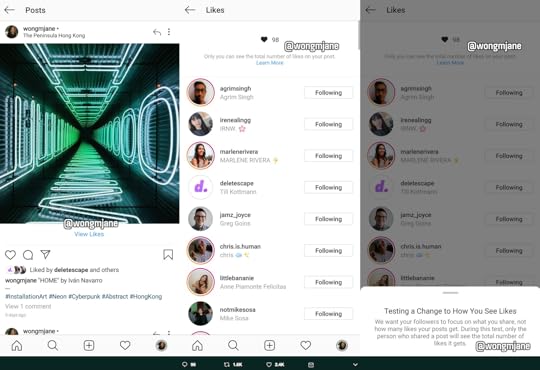 Instagram removes like count in test. Photo courtesy of Jane Manchun Wong.
Instagram removes like count in test. Photo courtesy of Jane Manchun Wong.“We want followers to focus on what you share, not how many likes your posts get,” said a message in the app. “During this test, only the person who shared a post will see the total number of likes it gets.”
In Wong’s screenshot of the test, her number of likes are missing. In its stead is this message: “Liked by deletescape and others.” Only the user who published the image, Wong, can see the number of likes her post received. That number is not visible to her followers.
If this test rolled out, it’s unclear whether users would still be able to view the accounts that liked the post. In Wong’s screenshot, the like count is missing and the “others” text is no longer in bold. This suggests that people who liked the image may not be visible to the public, either, since the bolded “others” signals a text as a clickable feature.
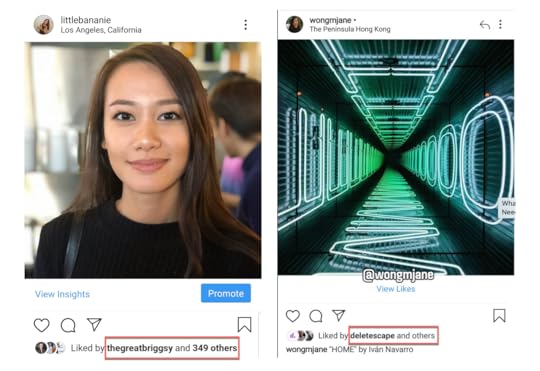 “Others” is no longer bolded in the test version of the feature.
“Others” is no longer bolded in the test version of the feature. Instagram’s test may throw users in a panic, for good reason. Influencers, in particular, rely on engagement numbers to secure partnerships with brands. These brands measure influencers’ likes and comments against their number of followers to determine whether or not to offer a collaboration. By removing like count from the public, Instagram may be putting a wrench in influencer marketing.
Like count’s removal also makes engagement groups, which exist to inflate engagement numbers, obsolete. Without the ability to show like numbers to the public, there’s no point in creating and joining these groups.
Not only that, without like count, brands may have a difficult time establishing credibility. Likes often function as social proof. People use it to determine whether they should follow an account. After all, if a lot of users like and follow a brand, then there must be a good reason to follow it too.
Those who are alarmed by this feature need not worry prematurely. Because it’s still a test, the feature may not roll out. If it does roll out, engagement and follower numbers, which Instagram is not removing, can still be used to determine an account’s credibility.
Still, maybe removing like count could be a good thing. Sure, it may make influencer and social media marketing more challenging, but it does relieve users from the pressure of gaining more likes to feel popular or important.
Written by Anne Felicitas, writer & editor
The post Code Reveals Instagram May Hide Like Count from Users appeared first on AdvertiseMint.
April 18, 2019
Use These 5 Gen Z Behavioral Trends to Inform Your Marketing Strategy

By Anne Felicitas, writer & editor| APR 18, 2019
 Kat Wilcox / Pexels
Kat Wilcox / PexelsEver since millennials entered adulthood and obtained their purchasing powers, marketers have been scrambling to understand the minds of this coveted age group. Simply type the words “millennial” into Google search, and the second keyword appearing in Google’s suggestion field is “millennial marketing.” Clicking that search result reaps a long list of articles promising strategies to successfully market to those people. “The Ultimate Guide to Millennial Marketing,” says one title by renowned marketer Neil Patel. “10 Tips for Millennial Marketing,” says another by Entrepreneur.
Yes, millennials, many of whom are married and raising families or single and working full time, are a lucrative target audience for marketing messages. Yet, there is another age group that marketers should set their eyes on: generation Z.
Many gen Zs have acquired their purchasing powers. According to a 2018 Barkley report, gen Zs aged 16 to 21 spend an estimated $143 billion a year. Evidently, marketers must consider gen Zs in their marketing strategies, but those strategies must differ from the ones tailored to millennials. Gen Zs are a unique group because, born between 1995 and 2012, they have been exposed to the internet and social media since birth—they don’t know a world without it. Retailers need to consider this key fact among other behavioral trends if they want to attract this new pool of consumers.
Many Gen Zs Shop on Amazon
Because gen Zs have been raised in a world with internet, they are likely to be comfortable shopping online. Although there are many online retailers from which they can purchase desired items, a Piper Jaffray study, which Business Insider reports on, found that Amazon is a favorite e-commerce website for this age group. Of the 8,000 teens Piper Jaffray surveyed, 50 percent of gen Z teens said Amazon was their favorite website.
It’s not hard to imagine why Amazon would be preferred. It is, after all, one of the most popular e-commerce sites in the United States. It is so popular, in fact, that many shoppers begin their product searches there. By offering easy access to reviews, Prime subscriptions, and cheaper product alternatives, Amazon gives gen Zs several incentives to shop on its website instead of competitors’.
Gen Zs Still Prefer Brick-and-Mortar Stores
 Andrew Le / Unsplash
Andrew Le / UnsplashAlthough gen Zs are more than comfortable with online shopping, they still prefer to shop at physical retail stores. The ability to see the product and speak to a store personnel makes brick-and-mortar stores a valuable part of their shopping experiences.
Still, gen Zs have not known a world without technology, and for that reason, they expect retailers to incorporate technology into their stores. For example, gen Zs want to have free access to Wi-Fi so they can use Google for any questions they have about the product they want to buy. Using Wi-Fi, gen Zs can also visit review sites to ensure the product will satisfy their needs and to search for coupons online.
Yes, gen Zs may be frequent online shoppers, but they still value physical stores. To attract them, however, retailers must provide technology-driven experiences to suit the needs of this tech-savvy group.
Most Gen Zs Are Active on Snapchat, Not on Facebook
Facebook now has a reputation for being a social media platform for older users. Millennials, their parents, and even their grandparents have accounts. Founded in 2004, the early adopters of Facebook were college students, specifically Harvard attendees where Mark Zuckerberg spent his undergraduate years. Eventually, Facebook opened to college students, then high school students, then to the public. The users who frequented Facebook during its early years have now entered their mid-30s and mid-20s. To this day, Facebook has maintained its millennial users but has not attracted users of the younger generation.
Gen Zs like to spend their time where their parents aren’t: they like to spend time on Snapchat and Instagram. According to a Common Sense Media study, 51 percent of teens use Snapchat, 27 percent use Instagram, and only 19 percent use Facebook. Clearly, Facebook is not popular among the younger generation.
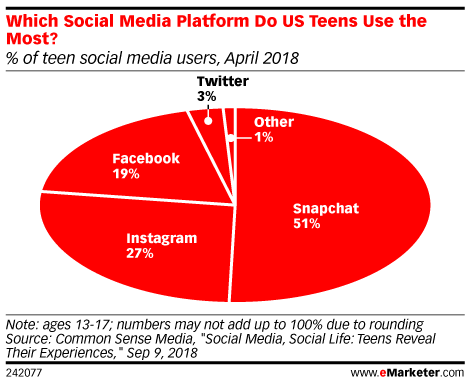 Image courtesy of Emarketer
Image courtesy of EmarketerThey Watch Videos on YouTube
When gen Zs aren’t scrolling through their Instagram feeds or posting Stories to Snapchat, they’re watching videos on YouTube, as discovered by Pew Research Center, the findings of which are shared by Emarketer.
According to the Pew Research Center’s study, which polled 2,587 teens aged 13 to 17, eighty-nine percent of male respondents and 81 percent of female respondents were YouTube viewers. Of the surveyed respondents, 47 percent said they spent at least three hours per day on YouTube.
At a time when video streaming is becoming as popular as cable TV, if not more, it’s not surprising that gen Zs dedicate several hours of their time on YouTube, where entertaining vlogs, movie trailers, tutorials, and viral videos reside. After launching YouTube Red, which produces bingeable shows à la Netflix, YouTube gives gen Zs even more incentive to spend time on its platform.
Gen Zs Favor Authenticity and Honesty
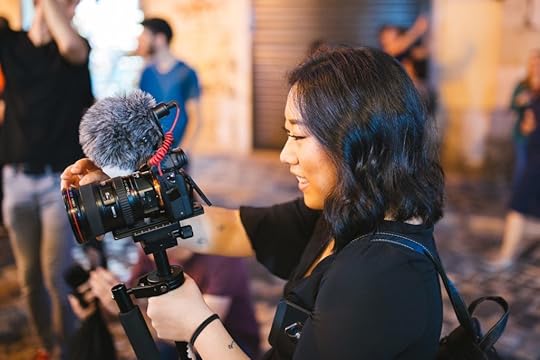 Fox / Pexels
Fox / PexelsThere’s one trend that seems to permeate digital advertising: video ads that don’t look too staged and too heavily edited perform well among audiences than clearly rehearsed videos. Peruse the content of the most popular media companies like BuzzFeed and Bon Appétit, and you’ll find that their videos maintain an authentic and unrehearsed feel.
With this existing trend, it’s no surprise that gen Zs favor authenticity and honesty when it comes to the advertisements they see. They want to see real people with honest testimonials. They want to see models of different shapes and sizes, who aren’t photoshopped or airbrushed.
Several big companies have already adopted the new trend of authenticity and honesty. Aerie, for example, launched Aerie Real in 2014, a campaign that strove to feature completely unretouched lingerie models. Dove, too, is another company that values authenticity, featuring women of diverse body sizes and skin tones in their ads.
Although millennials are still a lucrative audience to target, there’s another generation that shouldn’t be overlooked: gen Zs. As this age group approaches adulthood, as they join the workforce or have more control over the allowances their parents give them, gen Zs gain more purchasing power. With the right kind of strategy, there’s money to be made from this group.
Written by Anne Felicitas, writer & editor
The post Use These 5 Gen Z Behavioral Trends to Inform Your Marketing Strategy appeared first on AdvertiseMint.
April 17, 2019
A Brief History of Facebook’s Ad Targeting Restrictions

By Nicole Frost | APR 17, 2019

Con Karampelas / Unsplash
Due to a series of data security scandals, Facebook’s ad targeting features have undergone a major overhaul in regard to sourcing and distributing personal information. Here is a history of Facebook’s ad targeting restrictions and the reasons for their implementation.
Limiting Demographic and Location Data for Credit, Housing and Job Ads
In response to backlash and lawsuits from advocacy groups such as the National Fair Housing Alliance and Communication Workers of America, Facebook removed age, gender, and location options from targeted ads related to employment, housing, and credit. The previous ads led to discriminatory ads, and the lawsuits cost the social media giant nearly $5 million in settlements.
Additionally, Facebook removed 5,000 targeting options after the Department of Housing and Urban Development determined that the platform violated the Fair Housing Act by discriminating against users based on race and religion.
Facebook also modified its Lookalike Audience feature earlier this year to exclude religion, age, to group membership information from targeted search criteria.
Banning Anti-Vax Ads to Prevent Misinformation
Following a surge in hoax-based propaganda from users who oppose disease vaccinations, the platform put an end to anti-vax advertisements earlier this spring. Facebook also reduced the ranking of anti-vax groups in an effort to stop the spread of dangerous information about vaccines.
Removing Nazi Terminology from Targeting Options
After Pro Publica discovered that antisemitic and white supremacist phrases were used to target ads, Facebook modified its ad targeting options to exclude language that is associated with those topics. This change was mainly implemented to prevent the spread of hateful radicalization and to help users distinguish between legitimate news and extremist content.
Disclosing Advertiser Information
To better inform users about the companies that are marketing to them using Custom Audiences, Facebook now publishes advertiser information.

Adding More Restrictions to Custom Audiences
To prepare for the updated General Data Protection Regulation that took effect in spring 2018, Facebook began requiring advertisers to show that they have authorization to use the data they upload to create Custom Audiences.
After Cambridge Analytica collected information from millions of Facebook’s user profiles, the social media site was held responsible for failing to protect user data. Facebook was assessed a fine of £500,000 by the United Kingdom’s Information Commissioner’s Office in response to the incident.
Banning Ad Targeting from Third-Party Providers
Facebook removed the ability to use data from third-party sources in targeted advertisements, which is another change that was catalyzed by the Cambridge Analytica scandal. Previously, advertisers could use information obtained by data brokers to target users based on criteria such as recent purchases or household income.
After this regulation was initiated in September 2018, advertisers now must rely on their own information or data that can be collected through Facebook directly.
Disclaimers for Political Ads or Issues of National Importance
After discovering that Russian users were running politically divisive ads during the 2016 US presidential election, Facebook now requires political advertisers to publicly disclose who paid for the ad. In order to post an ad related to politics or certain public issues, advertisers must also verify their identities and locations.
Facebook is continuously making updates to protect user information, but many of these changes were implemented as a direct result of data misuse. Advertisers who want to utilize this platform to target potential consumers should be aware of Facebook’s changes and advertising regulations.
By Nicole Frost, writer at AdvertiseMint
The post A Brief History of Facebook’s Ad Targeting Restrictions appeared first on AdvertiseMint.
New: Instagram Flags More Content, LinkedIn Adds Reaction Buttons, and More

By Anna Hubbel | APR 17, 2019
 Phil Desforges
Phil DesforgesSocial media platforms are constantly evolving. Sometimes the changes are small; others are complete game changers. Twitter, LinkedIn, and Instagram have announced a few major changes that we may love, hate, or simply be indifferent to. Here are the latest updates for this trio of social media platforms.
Twitter Updates Its Prototyping App
Twitter’s prototyping app twttr, which the company uses to test and receive feedback on potential features, was recently updated with a variety of changes, according to Tech Crunch. The app, which has been out for about a month now, is used for experimenting purposes.
Based on users’ feedback, twttr is getting a swiping gesture for “liking” Tweets in conversations, new labels for conversation threads that show the original poster and who you’re following, and better visibility for dark mode.
Oddly enough, twttr is also getting some features that have already been added to the main Twitter app, such as new versions of the Twitter camera, dark mode (“Lights Out”), and profile previews within the timelines.
 Twttr in dark mode. Image Courtesy of Tech Crunch.
Twttr in dark mode. Image Courtesy of Tech Crunch. In the Tech Crunch article, Sara Haider, Twitter’s director of product management, says many twttr users like it better than the main Twitter app.
“That likely means certain features are sticking enough in the prototype app that they will be making their way into the permanent Twitter experience,” reports Tech Crunch. “But what form that will ultimately take is still in play.”
In particular, engagement buttons, such as the like, reply, and retweet buttons, are a major area of development for Twitter. On a platform that is constantly being crowded with new Tweets and information, engagement buttons can distract from an overall seamless experience, making feeds even more chaotic. In the twttr app, engagement buttons are no longer visible by default. While replying and retweeting still require a tap, you can now swipe left on a Tweet to “like” it.
“This is not exactly new: it’s an iteration of what we saw in the first major build of twttr,” says Tech Crunch. “There, the engagement buttons were also hidden away completely in conversations, and they only appeared when you tapped on a Tweet to begin engagement.”
However, the platform decided to change the act of liking to a swipe because mixed reviews indicated that the extra tap to like Tweets was an unwanted step.
“Replacing that tap with a swipe brings twttr in line with one of the most popular gestures in app user interfaces today, since the small touchscreens of smartphones are natural surfaces this gesture to make quick responses,” Tech Crunch observes.
We may see more updates that involve a simple gesture change for various functionalities and capabilities in the Twitter app.
Users have also indicated that they like the new threaded layout for conversations because it’s easier to read and follow. The previous layout gave you the option to either tap a “show more” button to expand conversations stemming from the main Tweet to view more replies or keep scrolling to view the replies. However, users complained that this layout was too distracting or cluttered, making it harder to follow conversations. In dark mode, it was also hard to follow the shading on replies.
Tech Crunch says Twitter appears to be addressing these issues with “more nuanced shading on replies that appears more clearly in dark mode” and by “playing with the number of ‘Show more’ buttons in threads – which have now been relabeled as ‘Show Replies.’”
 To view replies on twttr, users must click “Show replies.” Image courtesy of Tech Crunch.
To view replies on twttr, users must click “Show replies.” Image courtesy of Tech Crunch.The new labels for conversation threads showing the original poster and who you’re following give the twttr app a more organized feel. The former label comes in the form of “Author” in small red text to indicate the original poster. The latter label (users you’re following) are marked as “Following” in blue text in conversation threads.
 On twitter, the original poster is labeled in red as “Author.” Image courtesy of Tech Crunch.
On twitter, the original poster is labeled in red as “Author.” Image courtesy of Tech Crunch.Tech Crunch reports that the rollout of these twttr updates to the main Twitter app are still many months away. It will be interesting to see how the main Twitter app continues to evolve based on user feedback.
LinkedIn Adds Four New Reaction Buttons
LinkedIn recently introduced four new reaction buttons for posts. Now, in addition to the “like” button, there’s “celebrate,” “love,” “insightful,” and “curious.” The reactions are globally available to all users for both desktop and mobile devices.
The new reaction buttons are similar to Facebook’s rollout of multiple reaction buttons more than three years ago. The buttons may help LinkedIn boost engagement on the platform, according to Tech Crunch.
“LinkedIn has never been one for jumping quickly to new trends,” reports Tech Crunch, “but this nevertheless shows that it’s listening and understands that it has to provide more to users to make its platform more dynamic, to help spur more engagement (and in turn more people posting to the platform).”
The reaction types LinkedIn chose are based on the conversations users are most likely to have on the platform. For example, LinkedIn users are more likely to post career- or professional-oriented content. The selected reactions fall under the categories of either encouragement or contemplativeness.
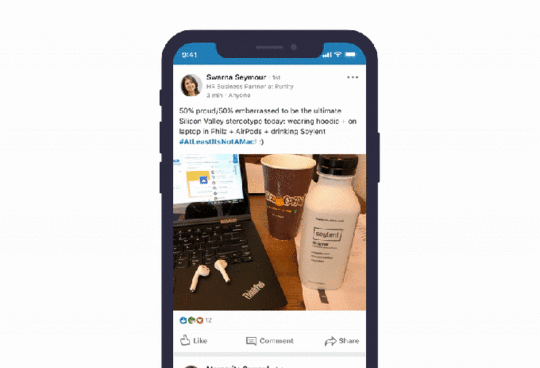 LinkedIn rolls out post reactions in app. Image courtesy of Tech Crunch.
LinkedIn rolls out post reactions in app. Image courtesy of Tech Crunch.Tech Crunch believes these new reactions contribute to two of LinkedIn’s broader goals: to stimulate more engagement and to stay competitive with other social media sites like Facebook.
“Facebook may today be far from providing the same kind of recruiter tools, or database of working professionals and their experience; but its own efforts in recruitment services and mentoring are direct competitors to LinkedIn’s social tools for the working world, providing a kind of lite alternative,” Tech Crunch observes.
In other words, every small change LinkedIn makes to create a more compelling platform can help it stay in the game.
Instagram Now Demotes Mildly Inappropriate and Offensive Content
Instagram is now reducing the reach of inappropriate posts that do not necessarily violate its Community Guidelines. For example, if a post contains sexually suggestive content but does not contain any sex acts or nudity, Instagram will still demote it. The same applies to content that is borderline hate speech or offensive.
The announcement was made in a Facebook Newsroom article about the new ways the company is managing problematic content. Under the “Instagram” heading, the company said it is “limiting those types of posts from being recommended on our Explore and hashtag pages.”
The demotion of such content, Facebook explained, avoids the recommendation of content to users that is unsafe and inappropriate.
Going forward, Instagram’s content moderators will also be flagging borderline content when searching for policy violations on the platform. Flagged content will be marked with labels used to train the Instagram algorithm to reduce the reach of such posts.
 Instagram demotes non-recommendable content and removes violating content. Image Courtesy of Tech Crunch
Instagram demotes non-recommendable content and removes violating content. Image Courtesy of Tech CrunchTech Crunch reports that borderline content will not be completely removed from the platform, and the change will not, at this time, affect Instagram’s feed or Stories bar.
Facebook already has a similar policy in place that pushes borderline content lower in News Feed.
“As content gets closer and closer to the line of our Community Standards at which point we’d remove it, it actually gets more and more engagement,” Facebook’s Henry Silverman told Tech Crunch. “It’s not something unique to Facebook but inherent in human nature.”
The new policy aims at warding off that incentive to push the limits.
“This all makes sense when it comes to clickbait, false news, and harassment, which no one wants on Facebook or Instagram,” Tech Crunch observes. “But when it comes to sexualized but not explicit content that has long been uninhibited and in fact popular on Instagram, or memes or jokes that might offend some people despite not being abusive, this is a significant step up of censorship by Facebook and Instagram.”
At this time, Instagram has not released any guidelines that define exactly what can be categorized as “borderline content.” However, the company does provide an explanation of the policy in its Help Center.
Written by Anna Hubbel, writer at AdvertiseMint
The post New: Instagram Flags More Content, LinkedIn Adds Reaction Buttons, and More appeared first on AdvertiseMint.
April 16, 2019
Coachella Content Ideas for Instagram, Pinterest, and YouTube

By Anne Felicitas | APR 16, 2019
 Andrew Ruiz / Unsplash
Andrew Ruiz / UnsplashIf you’re perplexed by the sudden reduction of LA traffic as you quickly breeze through the unusually unclogged 101 freeway, you’ll be delighted to hear that I have the answer to this bizarre phenomenon: Coachella weekend.
Each year thousands of festivalgoers donning bandanas over their mouths, faces glittered and painted, migrate to one speck of the US map, Indio, California, to enjoy a three-day event filled with music, food, and dance. Coachella, which spans two weekends, just finished its first round of festivities, entering the second round this upcoming Saturday and Sunday.
As festivalgoers pack their bags to prepare for Coachella Part II, you have a small, three-day window to provide relevant, helpful content related to this hot and trending event, content like fashion inspiration, travel advice, and beauty tips. YouTube, Pinterest, and Instagram, where most people post their festival experiences, are among the best platforms to share Coachella-related content.
On Instagram Food, Fashion, and Fun Reign
If your followers consist of young twenty-something millennials like mine, you’ll find (whether to your dismay, envy, or delight) a slew of posts related to Coachella: fan-girling crowds before a performing artist in Stories, trendy- and expensive-looking food on Discover, and sexy glamour shots on the feed.
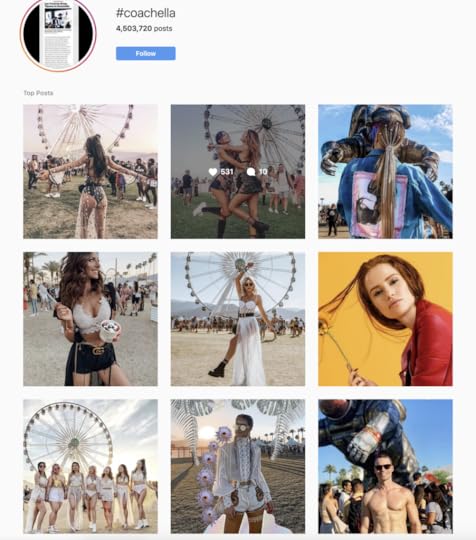 #Coachella results shows images of attendees’ outfits.
#Coachella results shows images of attendees’ outfits.As you scroll through Coachella posts, you’ll quickly find that the event isn’t merely a music festival. It’s also a fashion show where people peacock and flaunt their best desert outfits. In fact, most of the posts published on Instagram with the hashtag “coachella” contains images of festival goers showcasing their attires. Unsurprisingly, the third most popular coachella hashtag that appears in search is #coachellaoutfit.
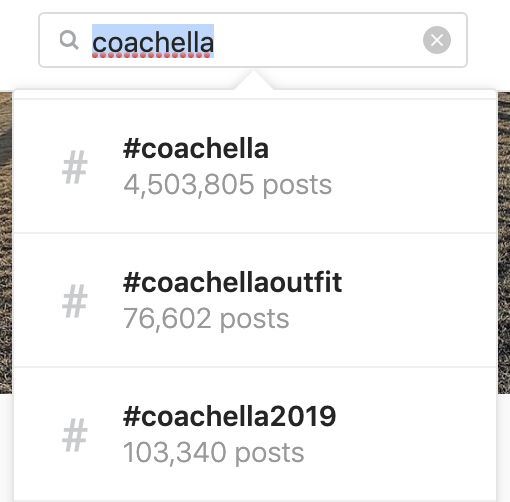 #Coachellaoutfit is the second most popular Coachella-related hashtag on Instagram.
#Coachellaoutfit is the second most popular Coachella-related hashtag on Instagram.As people prepare for the upcoming festival weekend, post your glamorous fashion shots to Instagram, adding the hashtags “coachella,” “coachellaoutfit,” and “coachella2019” to increase your visibility to users seeking fashion inspiration. You can also publish a live video on Stories, detailing your advice to festivalgoers about the styles they could wear to the event, once again using those three relevant hashtags.
If fashion is not your niche, you can also post images of food to your feed. Like fashion and music, food is also an integral part of the Coachella experience. In fact, there’s an Instagram account dedicated to “bringing you the best Coachella eats,” according to the profile’s bio.
 Coachella Eats is an Instagram account dedicated to food.
Coachella Eats is an Instagram account dedicated to food.Whether you attended the event this past weekend or you’re one of the vendors providing delicious snacks to attendees, post vibrant close-up images of your meals to your feed and Stories.
Pinterest Is for Planners
While Instagram users visit the app to passively look at images and videos for pure entertainment, Pinterest users visit the website for informative content that helps them prepare for projects they may have on their lists, whether that’s redecorating a room, planning a wedding, or arranging a long road trip. Rather than posting merely pretty images on the website, post useful content that contains actionable advice.
Michelle (also known as Mash Elle) is a fashion blogger based in Orlando, Florida, who used Pinterest to promote her blog post. In “15 Coachella Tips: Things You Need to Know Before Going,” Michelle advised readers to bring portable chargers, dress appropriately for the drastic temperature changes, and wear comfortable shoes. Her article is entertaining while informative, helping readers prepare for the three-day extravaganza.
 Mash Elle uses Pinterest to promote her blog post.
Mash Elle uses Pinterest to promote her blog post.Because travel is a hot topic on the platform, it would also be wise to post content that provides travel advice. For example, you can design an infographic illustrating the ways Coachella goers can optimize the space in their luggage. If you don’t possess any graphic design skills, you can instead write an article that lists the most inexpensive flights to Indio or the best scenic places to visit on the road trip to Coachella’s venue.
On YouTube, It’s Not Only About Tutorials
While Instagram can be credited for the rise of influencers, YouTube can be credited for the rise of video tutorials. When you need more than visual or literary help, whether that’s to assemble IKEA furniture you recently bought or to perfect your nose contour, YouTube is likely the platform you visit for instructional videos.
As Coachella goers visit Pinterest for tips on surviving the three-day rager or Instagram for fashion inspiration, they will also likely visit YouTube in search of hair and makeup tutorials. In fact, a quick search for “coachella hairstyles” reaps results as early as two days ago. The average number of views for those videos are within the thousands. If you want to post Coachella-related content to your YouTube account, post hair and makeup tutorials.
Of course, hair and makeup may not be of interest to you. If that’s the case, you can also publish a series about your experience before, during, and after the event. You can create an unboxing video when you first received your Coachella passes and document your time purchasing outfits, packing, and traveling. At Coachella, you can record a live video of the artists’ performances, review the food sold by vendors, and feature fellow festivalgoers you meet. After the event, you can film your bittersweet journey back to your hometown.
The last weekend of Coachella is merely three days away. As attendees prepare for Coachella Part II, they’ll likely turn to Instagram, Pinterest, or YouTube for travel tips, fashion and beauty inspiration, or a glimpse of what to expect at the event. When they do turn to social media for information, you have to make sure it’s you that they find.
Written by Anne Felicitas, writer & editor
The post Coachella Content Ideas for Instagram, Pinterest, and YouTube appeared first on AdvertiseMint.
April 12, 2019
Pressured by Public Ire, Facebook Implements Changes, Including the Algorithm

By Anne Felicitas | APR 12, 2019
 Photo courtesy of bostonmagazine.com
Photo courtesy of bostonmagazine.comEach social media platform has its own struggle. There’s Snapchat whose popularity, user base, and ad revenue cannot compete against rivals. There’s Twitter whose main predicament involves spam bots, and then there’s Instagram, where fake engagement abounds.
But no social media platform has experienced a year as tumultuous as Facebook. The problems of other social media companies appear miniscule next to the barrage of scandals it has faced. Since the proliferation of fake news and ads back in 2016, Facebook has been bombarded by one scandal after another—Russian interference, Cambridge Analytica, New Zealand shooting—in a seemingly endless cycle. Just when public ire abates, another controversy arises.
In the past two and a half years, Facebook has been improving its platform to better prevent abuse from bad actors. Recently the social media company announced a slew of new features and changes that curb misinformation and prohibited activities. These changes are coming to News Feed, Groups, Messenger, and Community Standards.
Yet Another Algorithm Change
Facebook’s algorithm has had a controversial history. In the early years of its existence, the algorithm was simple: posts that users published last would appear on top of the feed. That changed in 2016 when Facebook switched the algorithm from chronology to relevance, much to the chagrin of users. The company changed the algorithm yet again in 2018, prioritizing posts from friends and family over posts from businesses, brands, and publishers.
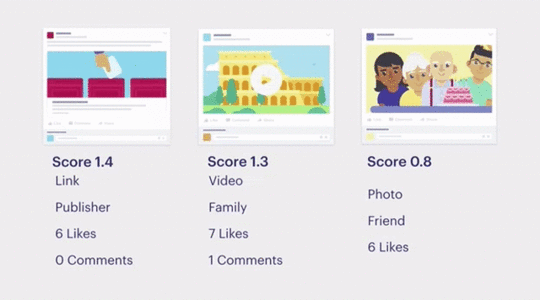 Previously, the algorithm ranks recency, engagement, and post
Previously, the algorithm ranks recency, engagement, and postFacebook announced that it’s adding yet another tweak to the algorithm. This time, it’s introducing a new ranking measure called click gap. Click gap compares the number of outbound clicks of a link posted to News Feed against the number of clicks it receives on the web. If the outbound clicks disproportionately outnumber web clicks, Facebook, viewing that link as part of a spam activity, will demote the post to the bottom of the feed.
An algorithm change isn’t the only update to News Feeds. Context buttons, too, will appear on images posted to the feed. These context buttons are similar to the ones that appear on articles, providing information about the publisher, the author, and the number of shares.
Curbing Scams and Improving Privacy on Messenger
It’s easy to impersonate someone on Facebook. One needs to only pull an image from that person’s profile and create an account assuming the unsuspecting victim’s name. It could take months, even years, for the victim to notice the impersonation.
Although impersonation happens to regular users, it’s especially rampant among high-profile accounts owned by public figures, celebrities, and politicians. For this reason, Facebook is expanding verification badges to Messenger.
Facebook is also rolling out a few features that help users better protect their privacy. One is Messenger Settings, which allows users to control who can reach their chat lists. From this new Settings tool, they can prevent strangers, phone contacts, and Instagram followers from messaging them. Another feature is Forward Indicator, which tells users whether the message they received was forwarded to them. The last is the context buttons from News Feed, which will appear when users share articles or images to recipients on Messenger.
Better Accessibility for Community Standards
Facebook’s Community Standards outlines the rules of what users can and cannot do on the platform. Information about intellectual property, banned content, and prohibited behavior can be found there. However, the information users find on that document changes because Facebook updates Community Standards as it discovers the many new ways bad actors exploit the platform. In the past, Facebook has revised its rules on regulated goods, harassment, and hate speech in response to problematic behaviors by errant users.
When Facebook changes Community Standards too often, it becomes difficult for users to keep track of the new rules. Now, Facebook has a section called “Recent Updates,” which lists the sections that the company has revised. Facebook will include the updated sections to Recent Updates each month.
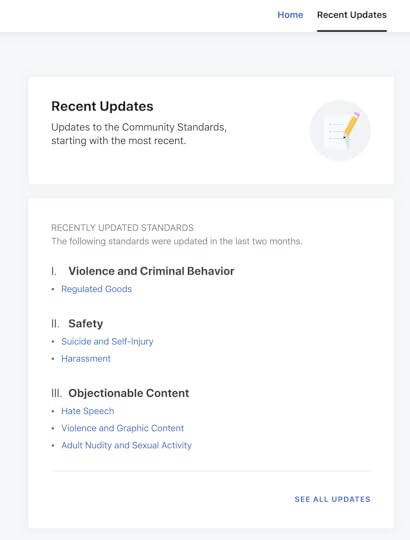 The Recent Updates tab shows users changes to Community Standards
The Recent Updates tab shows users changes to Community StandardsMore Accountability on Group Admins
Facebook groups have provided a space for users to connect with strangers on the platform, whether the purpose is to share ideas with like-minded individuals or buy and sell used items. Group categories range from politics to business to humor to religion. Although groups have been a helpful discussion hub for users, they, like many of Facebook’s features, can be exploited.
In the past, Facebook groups have been used for illicit activity. Last year, 60 marines were under investigation for exchanging revenge porn in a private Facebook group. Because this group was hidden and inaccessible to the public, people—and Facebook—were not aware of its existence and the illegal activity that occurred within. Facebook took down the group only after a whistleblower reported the unlawful activities.
To prevent such groups to exist again, Facebook is launching Group Quality, a feature that the social media company will use to determine whether or not to take down a Group. Group Quality will provide an overview of the admins’ and members’ activities, such as the number of posts removed or flagged and the number of false news. If Facebook sees that a certain group consistently violates Community Standards, it will reduce its reach on News Feed and Search.
The past two years have not been easy for Facebook. Just when it has addressed and resolved one issue, another one takes its stead. Recently, Facebook announced a handful of changes to make its platform a safer place for users, and it’s likely there will be more updates to come.
The post Pressured by Public Ire, Facebook Implements Changes, Including the Algorithm appeared first on AdvertiseMint.
Pinterest Users Are Searching for Summer Pins—Here’s How to Reach Them

April 12, 2019
Nicole Frost, writer at Advertisemint, facebook advertising agency
 Lisa Fotios / Pexels
Lisa Fotios / PexelsSummer is approaching, and Pinterest users are already on board with the seasonal change. If you want your brand to align with this month’s Pinterest trends, incorporate some of these ideas to boost visibility and search relevance.
The Great Outdoors
 Pixabay / Pexels
Pixabay / PexelsApril is when most of the country starts to warm up, so it’s a great time to post about anything from outdoor patio furniture to in-ground swimming pools. Users are searching for garden inspiration, picnic ideas, and unique ways to cool down as temperatures rise.
If you want to take advantage of a 700 percent increase in year-over-year (YoY) search frequency, tie a rustic barn theme into your content. Searches related to chicken coops, barn-facade homes, and edible gardening have skyrocketed this year. Increase brand visibility by telling your audience how to optimize garden space for easy-to-grow herbs or how to build a DIY-reclaimed wood pub table.
Fresh Fruits and Vegetables
 Trang Doan / Pexels)
Trang Doan / Pexels)Pinterest users are currently loving recipes that feature fresh produce. Grab their attention with bright, summery colors and helpful tips on how to use whole foods for entertaining, decor, and meal prep. Smoothies, homemade ice cream, and barbecue foil wraps are a few season-friendly ways to incorporate fresh fruits and veggies.
Road Trips and Minimalistic Travel
 Kun Fotografi / Pexels
Kun Fotografi / PexelsMinimalism-inspired travel is already a hot topic, even though summer is still on the horizon. Searches for van living and carry-on packing tips reached a YoY increase of 44 percent and 157 percent, respectively. Use the theme of minimalistic travel in your own content by adding a capsule packing list or road trip survival guide to your Pinterest campaign.
Although we’re still in the midst of the spring season, summer is already on the minds of many Pinterest users. Increase your brand visibility by incorporating some of these ideas.
Written by Nicole Frost, writer at
AdvertiseMint, best facebook advertising agency
The post Pinterest Users Are Searching for Summer Pins—Here’s How to Reach Them appeared first on AdvertiseMint.




